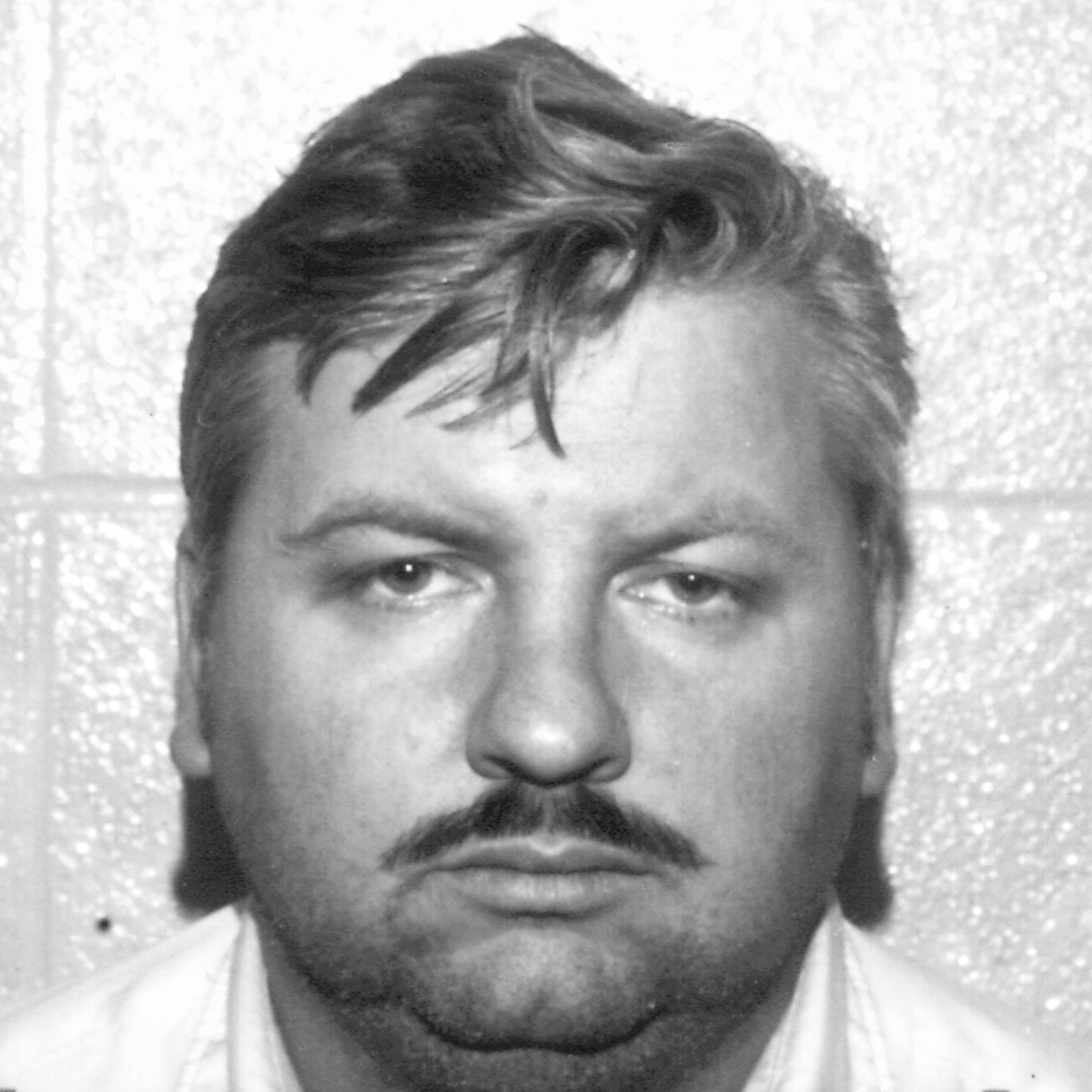
1942 - 1994
John Wayne Gacy
Summary
Name:
Nickname:
The Killer ClownYears Active:
1972 - 1978Birth:
March 17, 1942Status:
ExecutedClass:
Serial KillerVictims:
33+Method:
Strangulation / Asphyxiation / Torture / RapeDeath:
May 10, 1994Nationality:
USA
1942 - 1994
John Wayne Gacy
Summary: Serial Killer
Name:
John Wayne GacyNickname:
The Killer ClownStatus:
ExecutedVictims:
33+Method:
Strangulation / Asphyxiation / Torture / RapeNationality:
USABirth:
March 17, 1942Death:
May 10, 1994Years Active:
1972 - 1978Date Convicted:
March 12, 1980bio
John Wayne Gacy was born on March 17, 1942. Born into a family of Polish and Danish descent, Gacy was the second of three children, welcomed into the world by John Stanley Gacy and Marion Elaine Robison, and he had two sisters. Life at home wasn't easy for Gacy. His dad was a World War I veteran and worked as a mechanic, but he struggled with alcohol and often treated Gacy badly. Gacy loved his dad but never felt like he could make him proud.

Gacy also had health problems, like a bad heart, which meant he couldn't play sports like other kids. He spent a lot of time in the hospital, missing school and falling behind in his studies. As he got older, Gacy found an interest in politics and joined the local Democratic Party. But his family life continued to be rocky, and he eventually left home, hoping to make a fresh start in Las Vegas.

After some time in Vegas, Gacy returned to Chicago, where he worked hard to build a career in business. He got married and had kids, but his personal life was far from smooth. He struggled with his sexuality and faced legal troubles, including accusations of assault. Despite his troubles, Gacy became known in his community for his involvement in local events and charities. He even became a clown for children's parties and parades. But behind the facade of a friendly neighbor and community member, Gacy had a dark side. He was eventually arrested and convicted of horrific crimes.

murder story
John Wayne Gacy, a notorious figure, was responsible for the deaths of at least thirty-three young men and boys during the 1970s. His grim legacy includes the horrific detail that he buried twenty-six of his victims in the crawl space beneath his house. Gacy preyed on individuals he encountered in various locations around Chicago, including the Greyhound Bus station and Bughouse Square. He often enticed his victims with promises of employment through his contracting business, PDM Contractors, offers of drinks, drugs, or money for sexual favors. In some cases, he exerted force, while in others, he impersonated a police officer, complete with a sheriff's badge and a black Oldsmobile equipped with spotlights, to deceive his targets into compliance.
Gacy’s method of operation involved inviting victims to his home, where he gained their trust through social means such as offering drinks or showcasing a magic trick involving handcuffs. He would initially handcuff himself as part of the trick, demonstrating his ability to escape, before convincing his victim to try the handcuffs themselves. Once the victim was restrained, Gacy's demeanor drastically changed as he subjected them to brutal rape and torture. The tortures Gacy inflicted were varied and cruel, ranging from sexual assault to physical and psychological torment. He used objects like cigars for burning his victims, prescription bottles, and dildos to inflict pain. He also employed a disturbing method where he would restrain his victims to a two-by-four with handcuffs, forcing them into further submission and control. His torturous acts could include forcing victims to simulate animals while he demeaned and inflicted pain on them.
The culmination of his gruesome acts often involved the use of a rope tourniquet, which he would tighten with a hammer handle, a method he ominously referred to as the "rope trick." Gacy would inform his victims that this was "the last trick" they would see, indicating their impending death. The process of murder could be prolonged, with victims sometimes taking hours to die, often as a result of asphyxiation caused by cloth gags. After committing the murders, Gacy would sometimes keep the bodies under his bed for up to a day before moving them to his crawl space. There, he used quicklime to accelerate the decomposition of the bodies. Gacy's house thus became a macabre graveyard, hidden beneath the floorboards until his arrest brought his crimes to light.
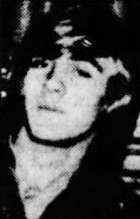
John Wayne Gacy's first known murder took place on January 3, 1972, after he had attended a family party. Early the next morning, he encountered 16-year-old Timothy Jack McCoy at Chicago’s Greyhound Bus Terminal. McCoy, who was traveling to Omaha, Nebraska, had some time to spare before his noon bus. Gacy offered him a tour of Chicago and a place to stay for the night. The next morning, Gacy claimed he was startled to find McCoy in his bedroom doorway with a kitchen knife, which led to a fatal altercation where Gacy ended up stabbing McCoy repeatedly. Believing McCoy had intended to make breakfast, as evidenced by a prepared table, Gacy then buried him in his crawl space, covering the grave with concrete.
On July 30, 1975, John Butkovich, an 18-year-old employee, confronted his employer over unpaid wages. The next day, he mysteriously disappeared, his car found abandoned with personal items still inside. His father contacted the employer, who feigned concern and suggested Butkovich had run away. Despite his parents' persistent pleas to the police to investigate further, it took three years before the truth emerged. The employer, later confessing to the crime, admitted he lured Butkovich under the pretense of resolving the pay dispute, then handcuffed and strangled him at his home. The body was hastily buried under his garage's concrete floor to evade detection.
In the mid-1970s, following his divorce, John Wayne Gacy's life took a dark turn as his criminal activities escalated. Gacy admitted that by 1975 he had begun to frequently seek out young males for sexual encounters, a practice he referred to as "cruising." Most of his murders occurred between 1976 and 1978, during which he lived largely alone. Neighbors noted changes in his behavior post-divorce, including late-night activities and the company of young males. Gacy's method involved luring victims to his home under various pretenses, where he would then overpower and murder them, often burying the bodies underneath his house. The discovery of multiple young men's bodies in his crawl space eventually led to his arrest and conviction.
When Robert Piest did not return home, his family reported him missing to the Des Plaines police. A contractor named Gacy was identified as the last person seen with Piest. Lieutenant Joseph Kozenczak, connected through his son attending the same school as Piest, took charge of the investigation. A background check on Gacy revealed past convictions, including a charge for battery and imprisonment for the sodomy of a teenager.
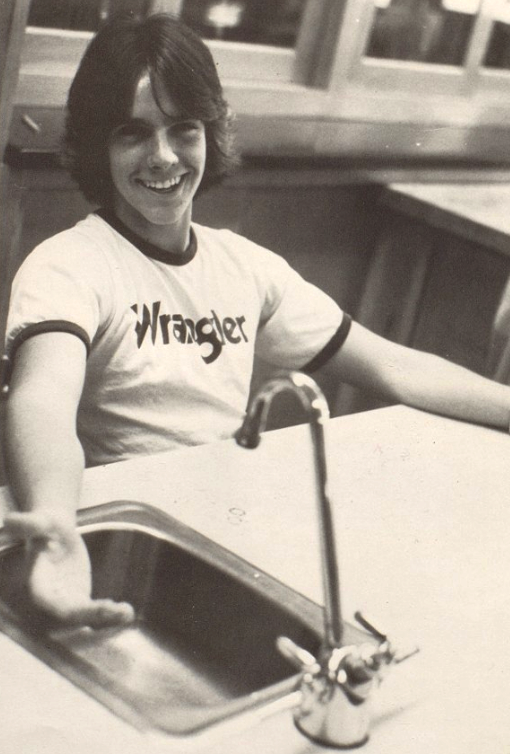
Kozenczak and two officers visited Gacy's home. Gacy claimed he had spoken to Piest about job materials but denied offering him employment. He promised to visit the police station later but claimed a delay due to his uncle's death, accusing the officers of insensitivity. Arriving at the station around 3:20 a.m. covered in mud, Gacy claimed a car accident was to blame. He denied any involvement in Piest's disappearance and said he returned to the pharmacy only to retrieve his forgotten appointment book, contradicting the store owner’s statement.
On December 13, with suspicions growing, police secured a search warrant for Gacy's house. The search unearthed disturbing items: police badges, a syringe, handcuffs, books on homosexuality, pornographic films, and other incriminating materials. A class ring and a pharmacy receipt linked to Piest were also found, heightening suspicions.
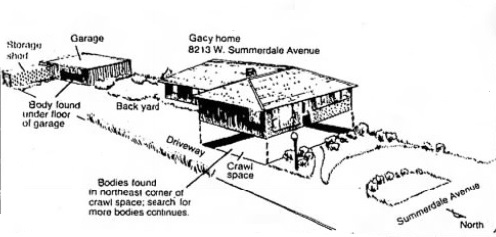
Surveillance was intensified, and further investigations led to a connection with other missing persons. On December 15, evidence of Gacy's violent tendencies was compounded by a victim's testimony of abduction and assault by Gacy. The situation escalated as more evidence was gathered, including a confession from Gacy's associate about the disappearance of another employee. Eventually, Gacy invited police for meals, denying involvement but flaunting his awareness of their surveillance.
By December 19, police were preparing a second warrant, suspecting bodies were hidden in Gacy's house. Amidst these developments, Gacy filed a civil suit against the surveillance, claiming harassment. Finally, on December 22, after police found human remains in his house, Gacy confessed to multiple murders, claiming his victims were male prostitutes or runaways. His confessions continued into the early hours, detailing the gruesome nature of his crimes. Gacy was charged and found guilty on 33 counts of murder, making him one of America's most prolific serial killers. His request for a civil suit was overshadowed by overwhelming evidence of his brutal crimes, sealing his fate with a death sentence.
On the morning of May 9, 1994, John Wayne Gacy was transferred to Stateville Correctional Center for his execution. That afternoon, he enjoyed a final picnic with his family on the prison grounds. For his last meal, Gacy chose a bucket of KFC, french fries, fried shrimp, fresh strawberries, and a Diet Coke. Later, he received the last rites from a Catholic priest. Evening approached, over a thousand people gathered outside the correctional center. Most supported the execution, wearing T-shirts with satirical slogans about Gacy's past as a community clown. A small group of anti-death penalty protesters was also present.
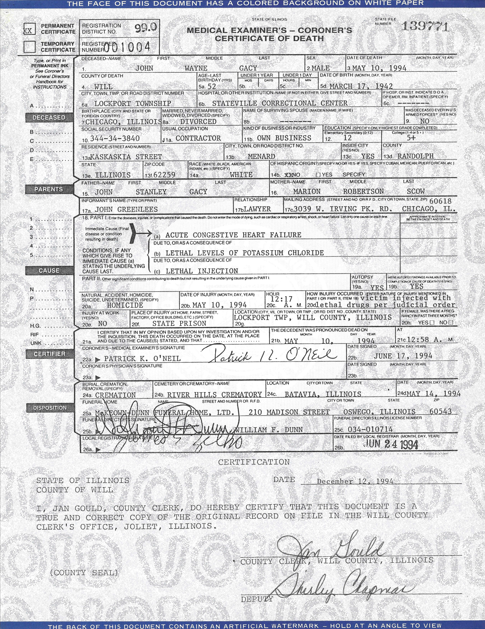
The execution encountered a technical issue when the lethal chemicals solidified, clogging the IV tube. This was resolved by replacing the tube, but the process was delayed, taking 18 minutes in total. Experts attributed the complication to the inexperience of the prison staff with executions, leading to a review of the lethal injection procedure in Illinois. Gacy's final words to his lawyer reflected no remorse, stating that his execution would not compensate for the loss of others and amounted to state-sanctioned murder. His last spoken words were reportedly defiant. After confirming Gacy's death, his brain was removed for study by Helen Morrison, a defense witness who had previously interviewed him. Gacy was then cremated.
Following Gacy's crimes, Illinois revised its procedures for reporting missing children, abolishing the mandatory 72-hour waiting period before launching a search. This change paved the way for the national Amber Alert system. The exhumation of Gacy's victims was meticulously carried out by Cook County medical examiner Robert Stein, who supervised the recovery and identification process.
Each body was carefully documented and removed from Gacy's property, where he had buried many of the remains. In the wake of the murders, Gacy's property became a grim tourist attraction. The case also prompted legislative changes and influenced the procedures for handling cases of missing children across the United States.